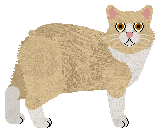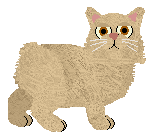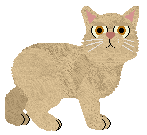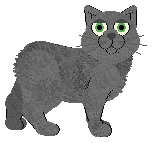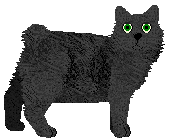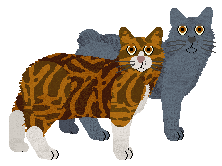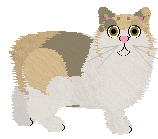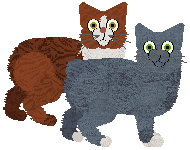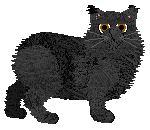The Manx is an ancient breed of cat originating on the Isle of Man in the Irish Sea, and so famous for their taillessness that “Manx” is used to describe taillessness in other species, as well. The island cat is thought to be a mix of native British cats and Viking ship cats—the ancestors of today’s Norwegian Forest Cat. It is a working cat, and as such has a strong constitution, great intelligence, and an active yet not hyperactive personality. They were one of the first show cats, and the shorthair variety was included among the five breeds accepted when CFA was founded in 1906. The longhair variety, known in some associations as the Cymric, was developed in the 1970s by Canadian breeders who wanted to present the fluffier kittens that sometimes occurred in shorthair litters. Although originally accepted as a separate breed, in many associations it is now considered a coat variety of the Manx.
In real life, Manx taillessness is lethal when homozygous - meaning that if two tailless Manx are bred together, the kittens die before or shortly after birth. For this reason tailed Manx exist, although they are completely unshowable. In Petz, we can safely ignore the lethality of the Manx gene, and tailless-tailless breedings are perfectly acceptable.
Type & judging remarks
The overall impression of the Manx cat is that of roundness; round head with a firm, round muzzle and prominent cheeks; broad chest, substantial short front legs and a short back which arches from the shoulders to a round, rabbit-esque rump. The overall “rabbitness” of the Manx is enhanced by its significantly shorter front legs, and of course, its lack of tail. Although a perfect lack of tail is more desirable, a short rise of bone is acceptable.











 in any amount.
in any amount.



 - copper is very slightly preferred
- copper is very slightly preferred



